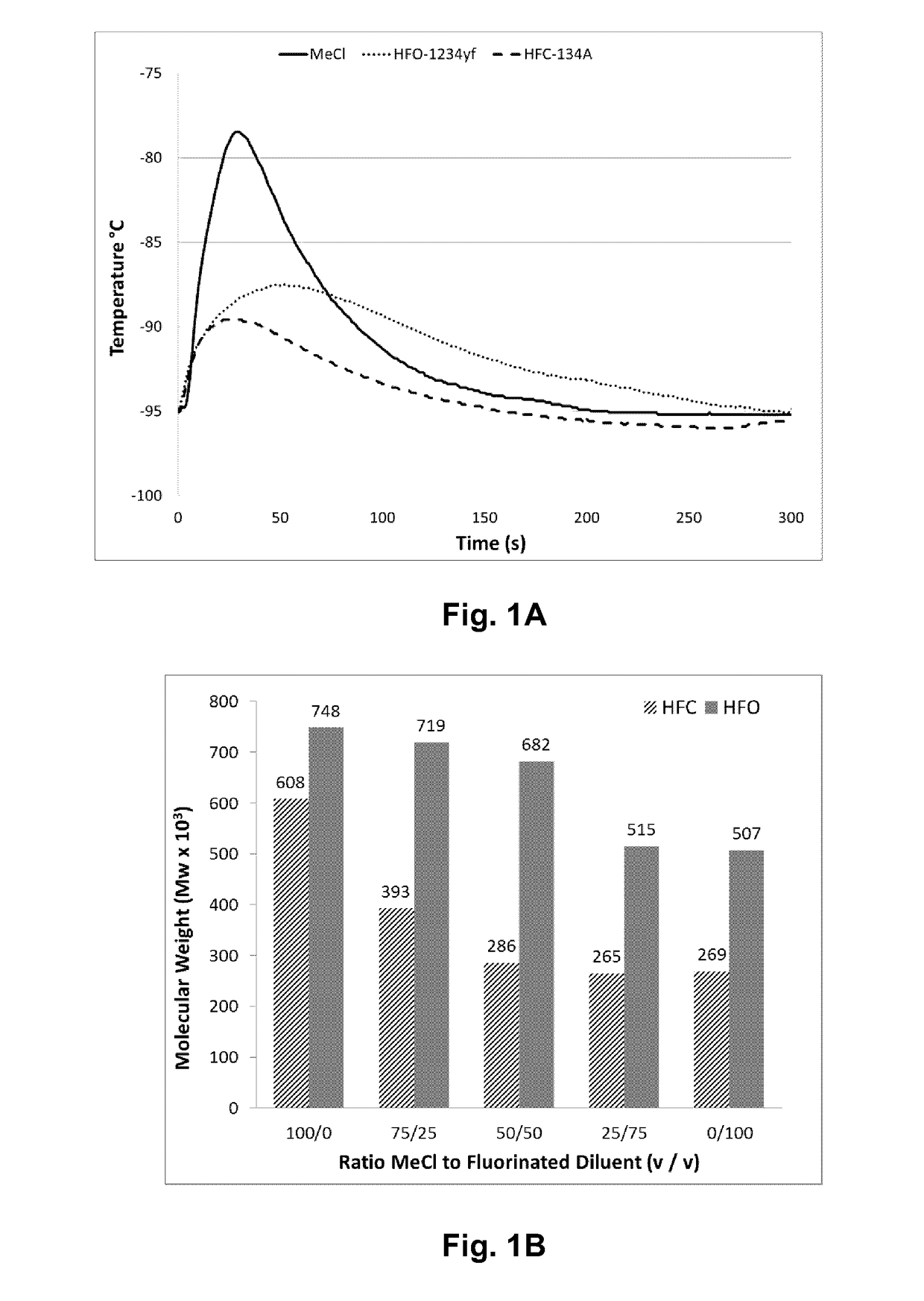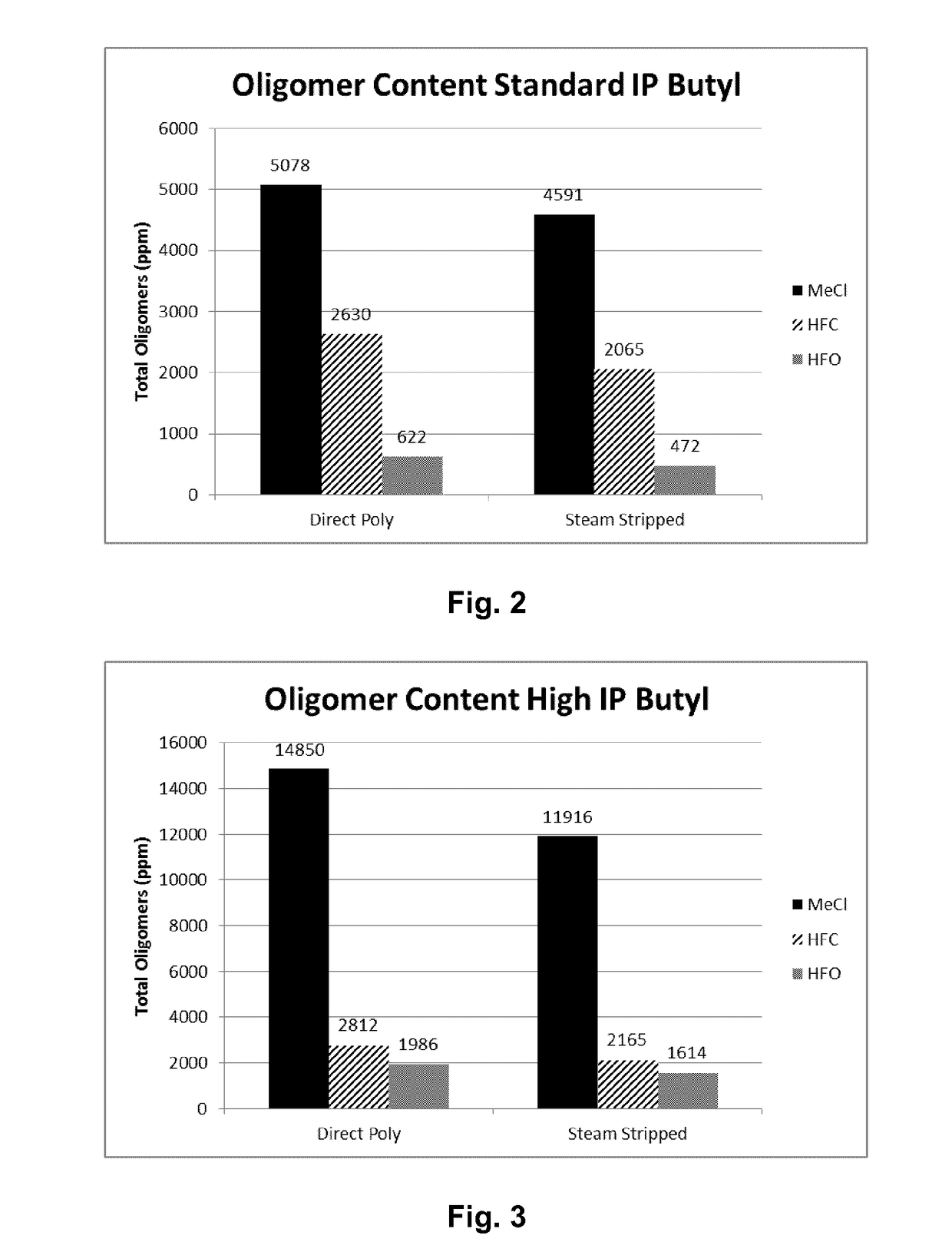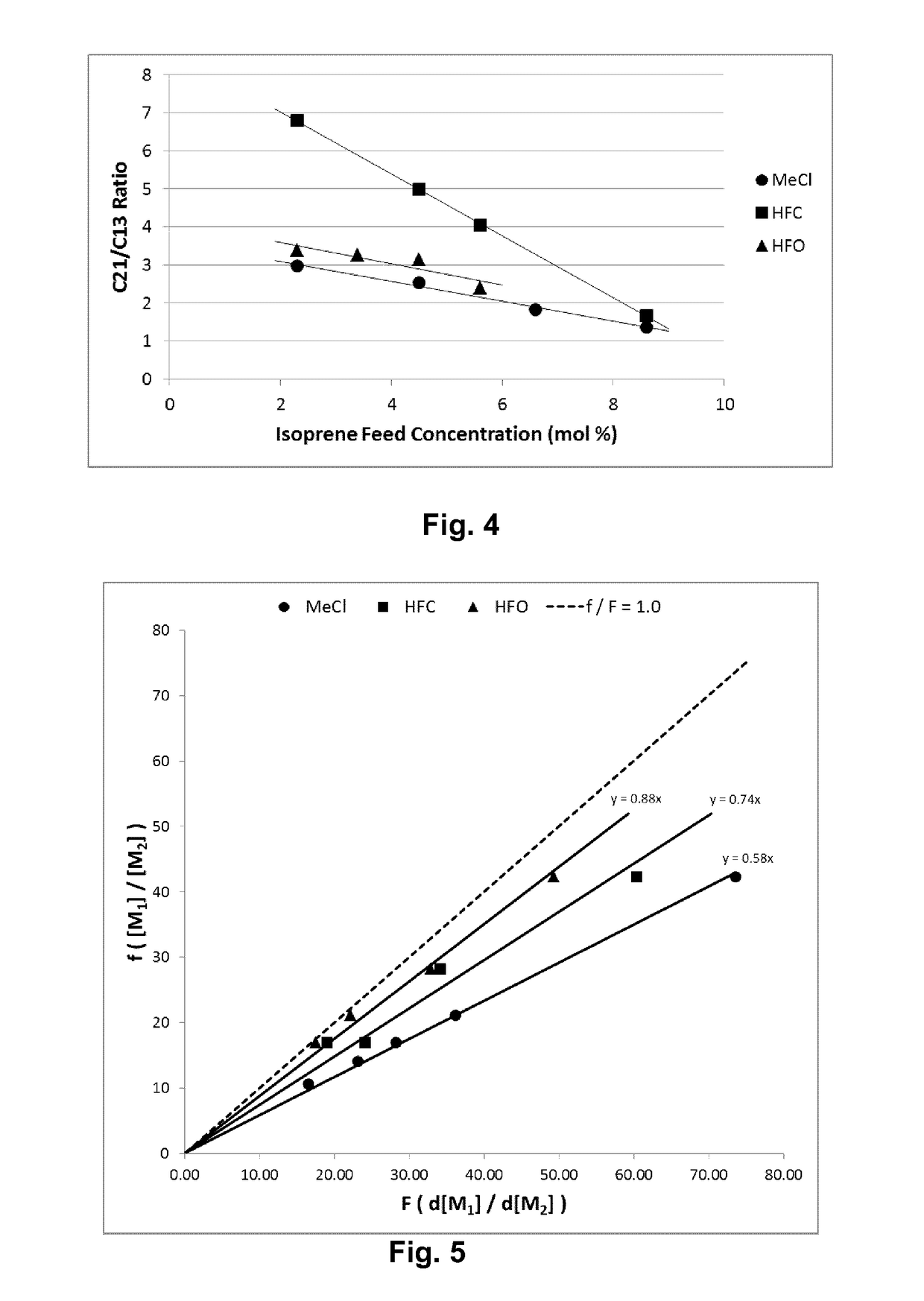Copolymer having high multiolefin content
- Summary
- Abstract
- Description
- Claims
- Application Information
AI Technical Summary
Benefits of technology
Problems solved by technology
Method used
Image
Examples
examples
[0051]All polymerizations were done in a dried, inert atmosphere. The polymerizations were performed as batch reactions in 600 mL stainless steel reaction vessels, equipped with an overhead 4-blade stainless steel impeller driven by an external electrically driven stirrer. Reaction temperature was measured via a thermocouple. The reactor was cooled to the desired reaction temperature, listed in the Tables, by immersing the assembled reactor into a pentane cooling bath. The temperature of the stirred hydrocarbon bath was controlled to ±2° C. All apparatus in liquid contact with the reaction medium were dried at 150° C. for at least 6 hours and cooled in a vacuum-nitrogen atmosphere alternating chamber before use. High purity isobutene and methyl chloride were received from LANXESS manufacturing facility and used as is. The hydrofluorocarbon 1,1,1,2-tetrafluoroethane (>99.9% purity) (HFC-134a, Genetron@ 134a) and hydrofluoroolefins (E)-1,3,3,3-tetrafluoro-1-propene (>99.99% purity) (H...
example a
Polymerizations with Pure Diluents at −95° C.
[0056]Table 1 lists the results of polymerizations conducted at −95° C. in methyl chloride (Examples 1 and 2), HFO-1234ze (Examples 3 and 4), HFO-1234yf (Examples 5 and 6) and HFC-134a (Examples 7 and 8). All polymerizations were performed consistently as reported above in a 600 mL stainless steel vessel using HCl / EADC as the initiator / coinitiator. Polymerizations were run with 180 mL diluent, 20 mL of isobutene and 0.6 mL of isoprene (isoprene content in feed=2.3 mol %). The initiator / coinitiator solution was prepared in 40 mL MeCl using 6 mL of a 0.16 M HCl / CH2C12 solutions and 4 mL of a 1.0 M hexane solution of ethylaluminum dichloride (EADC). The same volume of initiator / coinitiator solution (5 ml) was used in all examples in Table 1, which also provides more details on oligomer composition in each example.
TABLE 1TotalVolYieldConversionUnsats1)OligomersC21 / C13Ex.Diluent(%)(g)(Wt. %)Mw × 103Mw / Mn(mol %)(ppm)Ratio1CH3Cl10013.2865385.21....
example b
Polymerizations with Pure Diluents at −75° C.
[0065]Table 2 lists the results of polymerizations conducted at −75° C. in methyl chloride (Examples 9 and 10), HFO-1234ze (Examples 11 and 12), HFO-1234yf (Examples 13 and 14) and HFC-134a (Examples 15 and 16). All polymerizations were performed consistently as reported above in a 600 mL stainless steel vessel using HCl / EADC and the initiator / coinitiator. Polymerizations were run with 180 mL diluent, 20 mL of isobutene and 0.6 mL of isoprene (isoprene content in feed=2.3 mol %). The initiator / coinitiator solution was prepared in 40 mL MeCl using 6 mL of a 0.16 M HCl / CH2C12 solutions and 4 mL of a 1.0 M hexane solution of ethylaluminum dichloride (EADC). The same volume of initiator / coinitiator solution (5 mL) was used for all polymerizations.
TABLE 2TotalVolYieldConversionUnsats1)OligomersC21 / C13Ex.Diluent(%)(g)(Wt. %)Mw × 103Mw / Mn(mol %)(ppm)Ratio9CH3Cl10013.6922945.111.44225221.9410CH3Cl10013.7933445.511.44223161.9011HFO-1001.6112208.00...
PUM
| Property | Measurement | Unit |
|---|---|---|
| Temperature | aaaaa | aaaaa |
| Temperature | aaaaa | aaaaa |
| Weight | aaaaa | aaaaa |
Abstract
Description
Claims
Application Information
 Login to View More
Login to View More - R&D
- Intellectual Property
- Life Sciences
- Materials
- Tech Scout
- Unparalleled Data Quality
- Higher Quality Content
- 60% Fewer Hallucinations
Browse by: Latest US Patents, China's latest patents, Technical Efficacy Thesaurus, Application Domain, Technology Topic, Popular Technical Reports.
© 2025 PatSnap. All rights reserved.Legal|Privacy policy|Modern Slavery Act Transparency Statement|Sitemap|About US| Contact US: help@patsnap.com



